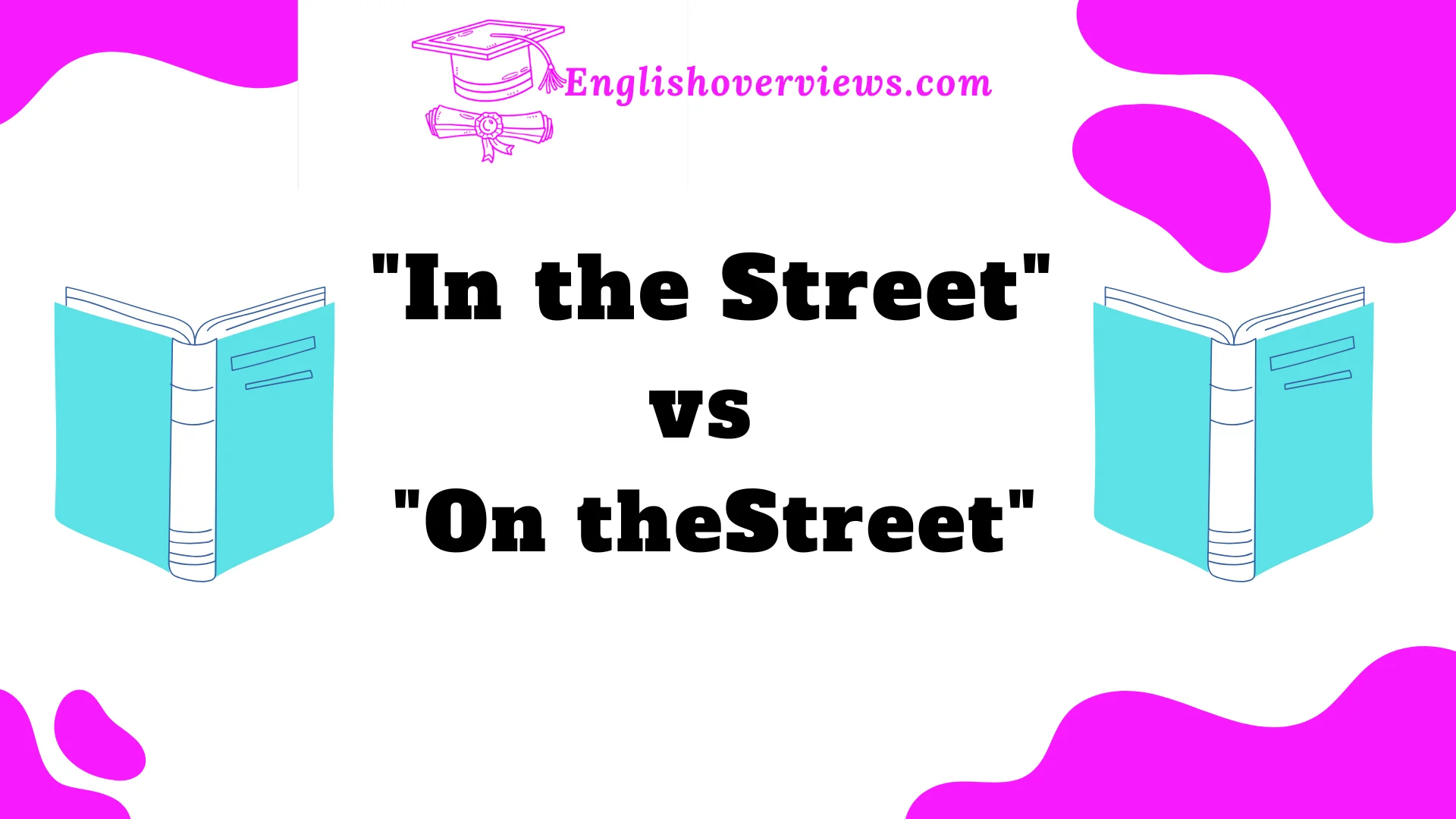Prepositions like “in” and “on” play a critical role in English, shaping how we describe actions, locations, and relationships. However, phrases like “in the street” and “on the street” can cause confusion, even for fluent speakers. Are they interchangeable? How do regional differences affect their usage?
This blog post dives deep into these questions, offering clear explanations, real-world examples, and practical tips to master the distinction. Whether you’re learning English as a second language or simply seeking to refine your grammar, this guide will provide clarity.
Let’s explore the nuances, practical applications, and context-driven differences between “in the street” and “on the street”, ensuring you use them effectively and confidently.
Why Prepositions Like “In” and “On” Matter in English
Prepositions are the backbone of clear communication in English. They connect nouns, pronouns, and phrases to other words in a sentence, showing relationships of place, time, and direction. Misusing a preposition can alter the meaning of a sentence, sometimes leading to confusion.
For example:
- “The kids are in the street.” This suggests they’re physically within the street, possibly in traffic.
- “The kids are on the street.” This implies they’re on the surface of the street, perhaps walking along it.
Such differences may seem small, but they drastically change the context. Let’s dig deeper into the specific meanings of “in the street” and “on the street” to see how they work in practice.
Defining “In the Street”: Usage and Context
The phrase “in the street” is typically used to describe being physically within the boundaries of a street. It emphasizes enclosure or immersion within the space.
When to Use “In the Street”
- Describing physical presence within the street boundaries.
Example: “A cat was lying in the street, causing drivers to slow down.” - Highlighting events or actions occurring within the street area.
Example: “A lively parade took place in the street, drawing a large crowd.” - Conveying immersion in an activity or event happening in the street.
Example: “The children were playing soccer in the street until sunset.”
Key Characteristics
| Aspect | Details |
| Emphasis | Enclosed within street boundaries |
| Context | Events, immersion, or presence inside a street |
| Common examples | “Debris scattered in the street.” |
Real-world Example:
Imagine a bustling New York City block where a food truck festival takes place. You’d say, “The festival was held in the street,” because the event occurs within the street’s space.
Exploring “On the Street”: Surface and Location
In contrast, “on the street” refers to being atop or located along the surface of a street. It emphasizes positioning relative to the street’s surface.
When to Use “On the Street”
- Indicating location or placement on the street’s surface.
Example: “A wallet was lying on the street near the sidewalk.” - Describing movement or activity along the street.
Example: “She was walking on the street, enjoying the evening breeze.” - Referring to general locations or addresses.
Example: “His house is on the street near the bakery.”
Key Characteristics
| Aspect | Details |
| Emphasis | Surface-level location |
| Context | Activities or positioning atop the street |
| Common examples | “A car parked on the street.” |
Real-world Example:
Picture a musician performing in a busy urban area. You might say, “The guitarist was playing on the street, attracting a small crowd,” because they’re positioned on the surface.
Grammatical Guidelines: When to Use “In” vs. “On”
Understanding the grammar behind “in the street” and “on the street” is essential for clear communication. Use this table as a quick reference:
| Phrase | When to Use | Examples |
| In the Street | Presence or action within the street area | “They were dancing in the street.” |
| On the Street | Surface-level activities or location | “The mural was painted on the street.” |
Tip: Always consider whether you’re describing enclosure (use “in”) or surface-level positioning (use “on”).
Are “In the Street” and “On the Street” Interchangeable?
While these phrases serve different purposes, there are instances where they overlap. Regional preferences, such as American English (AE) vs. British English (BE), often influence their use.
Examples of Overlap
- AE Preference: “The kids were playing in the street.”
- BE Preference: “The kids were playing on the street.”
Important Note: Context usually determines whether the phrases are interchangeable. For example, “There was a celebration in the street” implies immersion, while “She walked on the street” highlights movement along its surface.
The Less Common “At the Street”
The phrase “at the street” is far less common but has specific uses. It typically refers to specific points of reference.
When to Use “At the Street”
- Meeting points or intersections.
Example: “Let’s meet at the street near the café.” - Referring to events near or at a street’s edge.
Example: “The taxi stopped at the street corner.”
Real-world Case Study:
Consider a scenario where two friends agree to meet at a designated spot. One might say, “I’ll wait for you at the street by the bus stop,” emphasizing a precise location.
Understanding Regional Variations: American English vs. British English
American English (AE)
- “In the street” is more commonly used.
Example: “The kids are playing in the street.”
British English (BE)
- “On the street” is preferred in similar contexts.
Example: “The kids are playing on the street.”
Key Takeaway: Be aware of your audience’s regional background when choosing between these phrases.
Real-World Examples: How Context Drives Preposition Use
Here are practical examples showcasing proper usage:
| Scenario | Correct Phrase | Explanation |
| Traffic Accident | “Debris lay in the street.” | Within the street boundaries. |
| Address Reference | “Her office is on the street.” | Location along the street’s surface. |
| Meeting Location | “Let’s meet at the street corner.” | Specific meeting point. |
FAQs
1. Can “in the street” and “on the street” mean the same thing?
Sometimes, depending on context and regional usage. However, they often highlight different aspects of location or activity.
2. Why does British English use “on the street” more often?
British English tends to emphasize surface-level location, while American English often focuses on immersion or enclosure.
3. What’s the difference between “at the street” and the other phrases?
“At the street” refers to specific points, such as intersections or meeting spots.
Conclusion:
Mastering the nuances of “in the street”, “on the street”, and even “at the street” helps you communicate more effectively. Remember, context is key. Whether you’re describing a bustling parade, a parked car, or a specific address, choosing the right preposition ensures clarity.

Alyan Ashraf is the creative mind behind English Overviews, a platform dedicated to helping learners master the English language. Passionate about education and language development, Alyan specializes in simplifying complex English concepts, making learning accessible for students of all levels.











